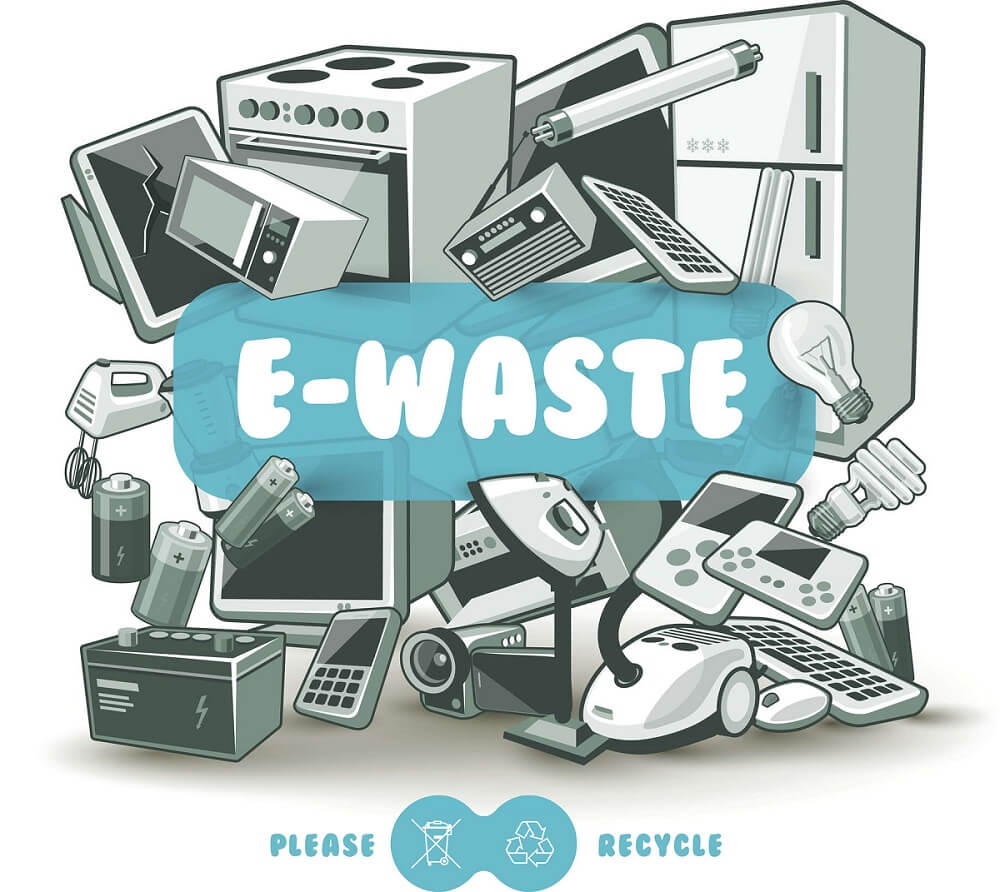For several decades the electrical and electronic equipment have revolutionized our lives, this type of devices are present in practically all homes, offices, hospitals, transportation, systems and communication networks; However, the technology of rapid innovation and short periods of life, have caused that every year there is a growing amount of electronic garbage, which represents a great challenge for the management of this type of waste worldwide.
Electrical and electronic equipment consists of hundreds of different materials, both valuable and potentially dangerous, for example: gold, silver, palladium and copper are some of the valuable materials that can be recovered; On the other hand, lead, cadmium, mercury and arsenic are dangerous components that may be present in this type of equipment, which depends on the type of technology used for its manufacture, the country of origin and the manufacturer.
Technological waste are classified in three colors, white, brown, gray.
White Line: The white line refers to refrigerators, washing machines, dishwashers, ovens and kitchens. In an average city, during the year 2000 about a thousand teams will retire.
Brown Line: They are the televisions that people throw away. Apart from what people shoot on their own, some 1,108 televisions are removed per year.
Gray Line: It is the most modern technology (computers, mobile phones and peripherals).
The Gray Line currently accounts for most of the technological discharges, thanks to the massive adoption in the homes of computers (desktops, laptops... and especially mobile phones).
Contaminants: Electronic equipment contains contaminants that can be dangerous to health and the environment, such as silicon, which is part of the computer processors, gas from refrigerators or fluoride inside fluorescent tubes.
Mobile phones: These equipments are the real problem, because their design has liquid crystals that are usually manufactured with very polluting materials. Further, their batteries also have toxic elements and there are no places to deposit old mobiles, although some stores pick them up.
Computer science generates innumerable benefits in all human processes, such as communications, access to timely information, organization, mass storage media, among others.
Rarely do you think about how computer equipment can affect the environment. But it is a fact that, like any manufacturing process, the manufacture of computer equipment generates waste, some of which are extremely toxic.
Some components of computers contain elements that should not be discarded directly. The obsolescence of equipment in increasingly shorter periods and its consumable use generates an increasing amount of garbage.
The modification of some of the habits depends on being able to enjoy many of the benefits offered by computing and technology in the future, without the damage to the land being irreparable.
Finally, we must ask ourselves some questions: do I have a computer that is not used at home? Do I have cell phones that I do not use? Do I have electronic devices or appliances that are no longer useful? If the answer is yes, where will I throw them or what will I do with them? Who am I going to give them to?
Throughout this process you have to look for alternatives for the best destination of electronic devices. GREEN TEK SOLUTIONS LLC can be an option in the disposal of your technological waste.

